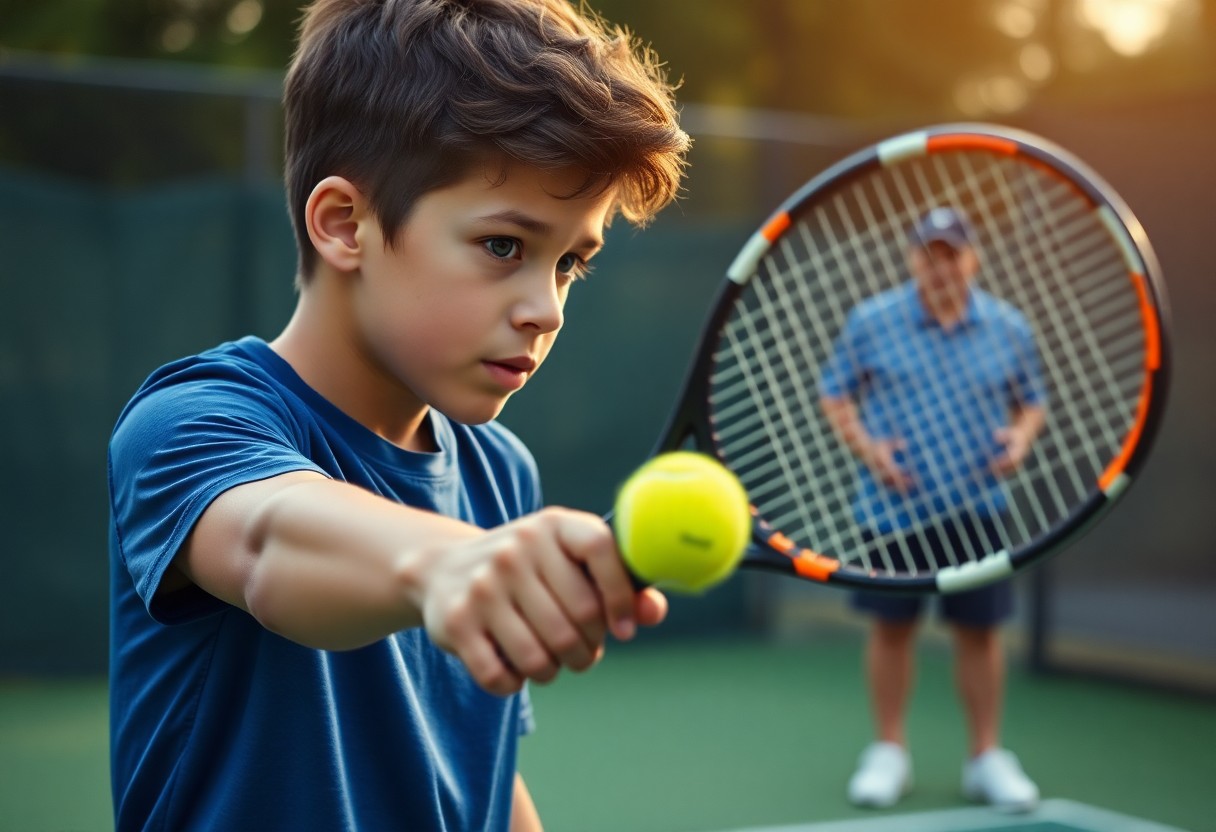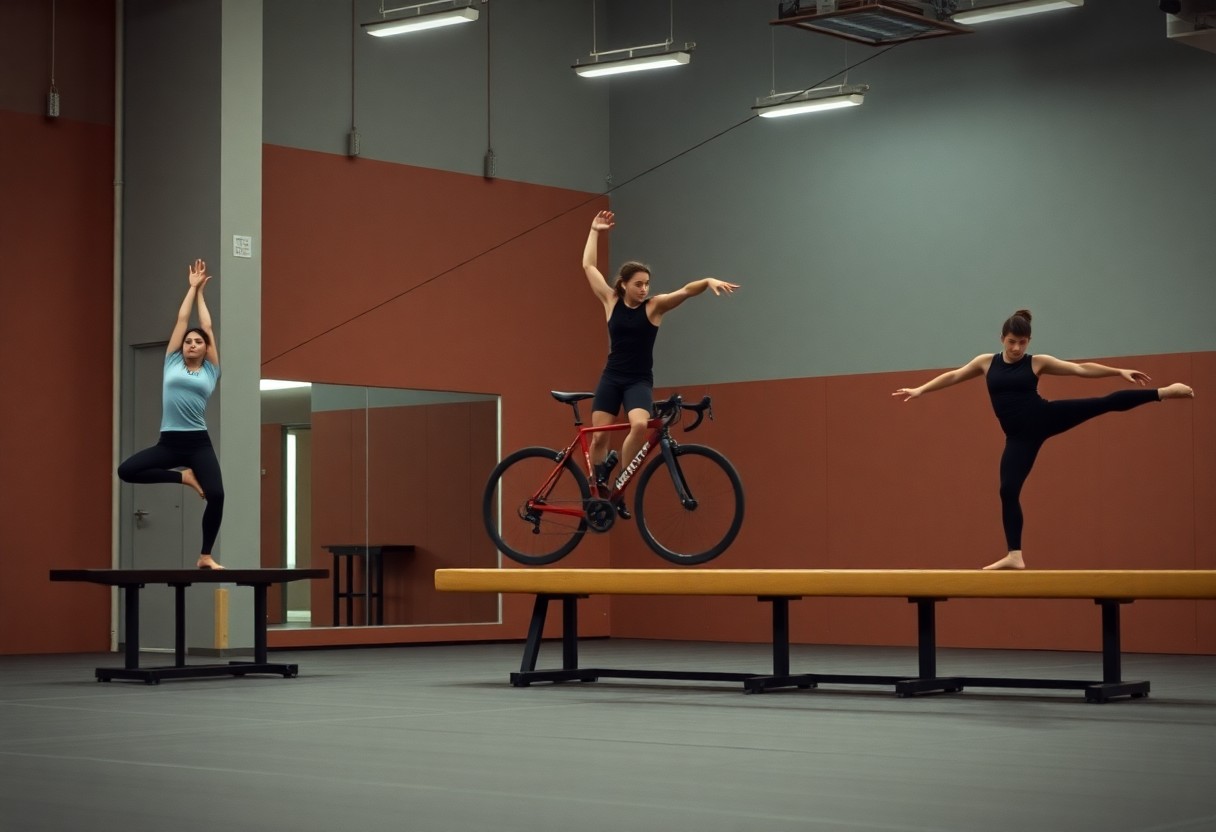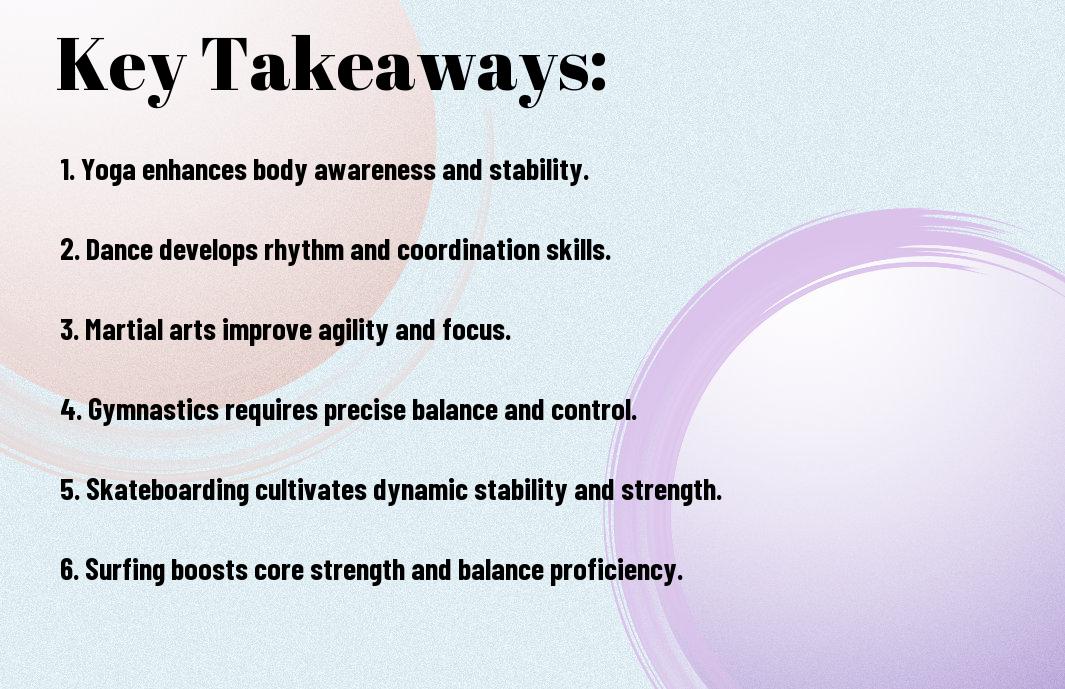Many athletes understand that enhancing hand-eye coordination can significantly elevate your performance on the field, court, or track. This blog post will provide you with effective techniques and exercises tailored to boost your coordination skills, ultimately helping you react quicker and more accurately during your games. Whether you’re swinging a bat, catching a ball, or hitting a target, these strategies will empower you to sharpen your reflexes and gain a competitive edge in your sport.

Key Takeaways:
- Practice Drills: Engage in targeted drills that involve catching, throwing, or hitting to enhance your hand-eye coordination.
- Visual Tracking: Improve your ability to track moving objects by using tools like tennis balls or reaction balls that bounce unpredictably.
- Balance Training: Incorporate balance exercises, as stability can significantly influence your coordination skills during sport activities.
- Footwork Exercises: Focus on agility drills that require quick foot movements alongside hand and eye actions to build a more synchronized response.
- Video Analysis: Analyze your performance through video recordings to identify areas for improvement in your coordination techniques.
Understanding Hand-Eye Coordination
For athletes, mastering hand-eye coordination can significantly enhance performance across various sports. It involves the ability to process visual information and perform precise movements using your hands and body. This intricate skill set is vital, as it enables you to react quickly and accurately to dynamic situations in your sport, allowing for improved timing and spatial awareness.
Definition and Importance
If you seek to elevate your athletic abilities, understanding hand-eye coordination is vital. It refers to the synchronized movement of your hands and eyes, particularly when tracking objects in motion. This skill is fundamental in activities such as catching, hitting, or throwing, underscoring its significance in overall athletic performance.
Key Factors Affecting Coordination
Clearly, several factors can influence your hand-eye coordination, determining how effectively you execute skills in your sport. Some key elements include:
- Your reaction time
- Visual acuity
- Practice frequency
- Body position and balance
Thou must pay attention to these elements to strengthen your coordination skills.
To further enhance your understanding, consider how each factor plays a role in your athletic performance. For example, improving your reaction time can lead to faster responses during gameplay, while working on visual acuity enables you to better track and anticipate movements. Other factors, such as consistent practice and maintaining proper body position, add to your overall hand-eye coordination. Keeping all these aspects in mind allows for targeted training and development.
- Motivation and mental focus
- Age and physical development
- Sport-specific techniques
- Feedback from coaches or peers
Thou should approach training with an awareness of these influencing factors for optimal improvement.

How to Assess Your Current Hand-Eye Coordination
Now that you’re motivated to enhance your hand-eye coordination, it’s vital to assess your current skill level. Understanding where you stand will help you tailor your training efforts effectively. By evaluating your performance through simple tests and drills, you can identify specific areas needing improvement and track your progress over time. This self-assessment will serve as a foundational step in your journey to master the coordination necessary for your sport.
Simple Tests to Evaluate Skill Level
One method to assess your hand-eye coordination is through simple tests like the ball toss exercise. Stand a few feet away from a wall and throw a small ball against it, then catch it as it rebounds. Count how many times you can successfully catch the ball in a row without dropping it. By repeating this test, you can measure your improvement and gain insights into your coordination skills.
Identifying Areas for Improvement
Evaluate your performance in the tests you conduct to pinpoint specific aspects of your hand-eye coordination that may need work. Take note of any patterns in your mistakes, such as consistently dropping the ball when catching or missing targets in drills. This process will help you create a focused training plan to address these weaknesses and elevate your overall performance.
This reflection is important as it allows you to approach your training with a clear understanding of where you fall short. For example, if you struggle with catching a ball consistently, you may want to focus on reaction time drills or exercises that improve your tracking skills. By narrowing down the areas that need enhancement, you will not only maximize your training efficiency but also experience quicker improvements in your hand-eye coordination relevant to your sport.
Tips for Enhancing Hand-Eye Coordination
Not all coordination exercises are created equal. To significantly enhance your hand-eye skills, consider the following tips:
- Practice catching and throwing various objects, like balls or Frisbees.
- Engage in sports that require quick reflexes, such as tennis or badminton.
- Incorporate precision tasks, like juggling or balancing objects on your hand.
- Focus on visual tracking exercises to improve your focus and reaction time.
Perceiving improvement will motivate you to continue pushing your limits.
Drills for Practicing Coordination
Any effective training regime should include specific drills designed to boost your hand-eye coordination. Incorporate activities that demand quick adjustments and dynamic movements, such as dribbling a basketball while navigating obstacles or hitting a target with a ball. Regularly practicing these drills will help you develop more accurate timing and better control of your movements in your sport.
Incorporating Video Games and Technology
While traditional training methods are beneficial, incorporating video games and technology can make a significant difference in your hand-eye coordination. Many games are designed to enhance reflexes and timing by requiring quick responses to visual stimuli.
HandEye coordination games, especially fast-paced action or sports simulations, challenge you to react swiftly and accurately. Devices like motion sensors or VR headsets further immerse you in these environments, enhancing your experience. By integrating these modern technologies into your training routine, you can make practice both enjoyable and effective, translating improved skills into your sport of choice.
Sports-Specific Exercises
Your performance in any sport can greatly benefit from targeted exercises that enhance hand-eye coordination. Implementing drills specific to your sport will not only sharpen your skills but also improve reaction time and precision. Whether you’re dribbling a basketball, volleying a tennis ball, or fielding a baseball, practicing sport-specific movements can lead to significant gains in your overall performance. Tailor your training regimen to include drills that mimic game situations for the best results.
Best Practices for Team Sports
Some effective team sports practices include partner training exercises, where players can simulate game scenarios. Focus on drills that involve passing, shooting, or receiving while maintaining a dynamic pace. Try incorporating activities like reaction ball drills or target practice within team settings to elevate the collective skill level. These collaborative exercises help build communication and awareness, important elements for success in team sports.
Individual Sports Techniques
To enhance your hand-eye coordination in individual sports, focus on refining specific skills through repetitive, targeted practice. Engaging in drills such as juggling, hitting against a wall, or shadowboxing can help improve your timing and accuracy. Individual sports require a high level of self-discipline, so consistency in your practice routine is key to seeing improvements in coordination.
Understanding the mechanics of your sport is vital for improving hand-eye coordination. Explore techniques that isolate the visual tracking of an object, like a ball or racket, to develop a more profound connection between your hands and eyes. For instance, practicing with different-sized balls or varying speeds can help train your reflexes and adaptability. Each drill should be tailored to mimic the specific actions and challenges you face in competition, ensuring that the skills you develop translate directly to your performance during matches.
Nutrition and Physical Health
Keep in mind that optimal nutrition and physical health are key components in enhancing your hand-eye coordination. A well-balanced diet rich in crucial nutrients fuels your body and mind, providing you with the energy and focus necessary to improve your performance. Prioritizing hydration, vitamins, and minerals will significantly aid your coordination training, enabling you to practice with greater intensity and effectiveness.
Impact of Diet on Coordination
The foods you consume can significantly influence your hand-eye coordination. Nutrients like omega-3 fatty acids, antioxidants, and complex carbohydrates support brain function and muscle performance, enabling quicker reflexes and improved timing in your sport. By focusing on nutritious foods, you can increase your stamina and concentration, directly enhancing your overall coordination.
Importance of Physical Fitness
Coordination is closely tied to your overall physical fitness. The stronger and more agile you are, the better your body can respond to dynamic movements. Regular exercise enhances your muscle tone, flexibility, and balance, all of which contribute to improved hand-eye coordination. Activities such as strength training, agility drills, and cardiovascular workouts should be incorporated into your routine to achieve peak performance.
Impact of a regular fitness regimen extends beyond mere physical capabilities. Engaging in a diverse range of exercises helps develop muscle memory, allowing you to perform sport-specific movements more accurately. Improved cardiovascular health also increases endurance, enabling you to maintain high levels of performance throughout your activities. By committing to physical fitness, you not only enhance your hand-eye coordination but also build a solid foundation for success in your sport.
Mental Strategies for Improvement
Unlike physical training, mental strategies can significantly enhance your hand-eye coordination by strengthening your focus and awareness. Techniques such as visualization can help you anticipate movements, allowing for smoother actions during gameplay. For more on this, check out How to Improve Hand-Eye Coordination: 10 Activities.
Visualization Techniques
For effective hand-eye coordination improvement, visualization techniques can be a powerful tool. By mentally rehearsing the movements required in your sport, you condition your brain and body to work in sync. Picture yourself in game scenarios, executing precise actions effortlessly, which can translate to better performance on the field or court.
Focus and Concentration Exercises
Assuming that external distractions can hinder your performance, focus and concentration exercises help sharpen your ability to maintain attention during critical moments. Practicing mindfulness techniques, such as meditation or deep breathing, can significantly boost your mental clarity, leading to better coordination during gameplay.
A structured approach to focus and concentration exercises can include setting specific goals before practice sessions. Engage in activities that require sustained mental effort, like juggling or playing sports that demand quick decision-making. Combining these strategies will enhance your hand-eye coordination, enabling you to react faster and more accurately when it matters most.
Summing up
On the whole, enhancing your hand-eye coordination is key to excelling in your sport. You can achieve this through targeted exercises, consistent practice, and engaging in sports-specific drills. Incorporating activities that challenge your reflexes and spatial awareness will further sharpen your skills. Stay committed to improvement, and consider tracking your progress to motivate yourself. By embracing diverse training techniques, you will develop better coordination, leading to improved performance and enjoyment in your chosen sport.
FAQ
Q: What are some effective drills to enhance hand-eye coordination for athletes?
A: There are several drills athletes can incorporate into their training routines to boost hand-eye coordination. One effective drill is the “Tennis Ball Drop”. Have a partner drop a tennis ball from shoulder height while you focus on catching it before it hits the ground. Another drill is the “Juggling Exercise”, where you can begin with two balls and gradually increase the number as you improve. The “Target Practice” drill is also beneficial; set up targets at various distances and practice throwing or hitting objects toward these targets to develop precision and focus. Consistently practicing these drills can help athletes improve their hand-eye coordination significantly.
Q: How can strength training influence hand-eye coordination in sports?
A: Strength training plays a significant role in enhancing hand-eye coordination by improving overall body control and stability. Exercises that target the core, shoulders, and arms can directly impact an athlete’s ability to execute movements that require precise coordination. For instance, kettlebell swings, medicine ball throws, and resistance band exercises can build muscular strength and endurance, allowing better control during complex sport motions. Integrating coordination elements into strength training routines, such as performing balance exercises or using unstable surfaces, can further refine the connection between the brain and muscles, ultimately enhancing hand-eye coordination.
Q: What role does practice and repetition play in developing hand-eye coordination for sports?
A: Practice and repetition are crucial in developing hand-eye coordination, as they help reinforce motor skills through consistent engagement. When athletes repeat specific movements related to their sport, the brain forms stronger neural pathways, which facilitates quicker reactions and improved accuracy over time. This iterative learning process allows athletes to internalize coordination tasks, resulting in smoother execution during actual competition. Setting aside regular practice sessions focused on hand-eye coordination, combined with feedback and adjustments, can lead to progressive improvement and greater performance in sports.








